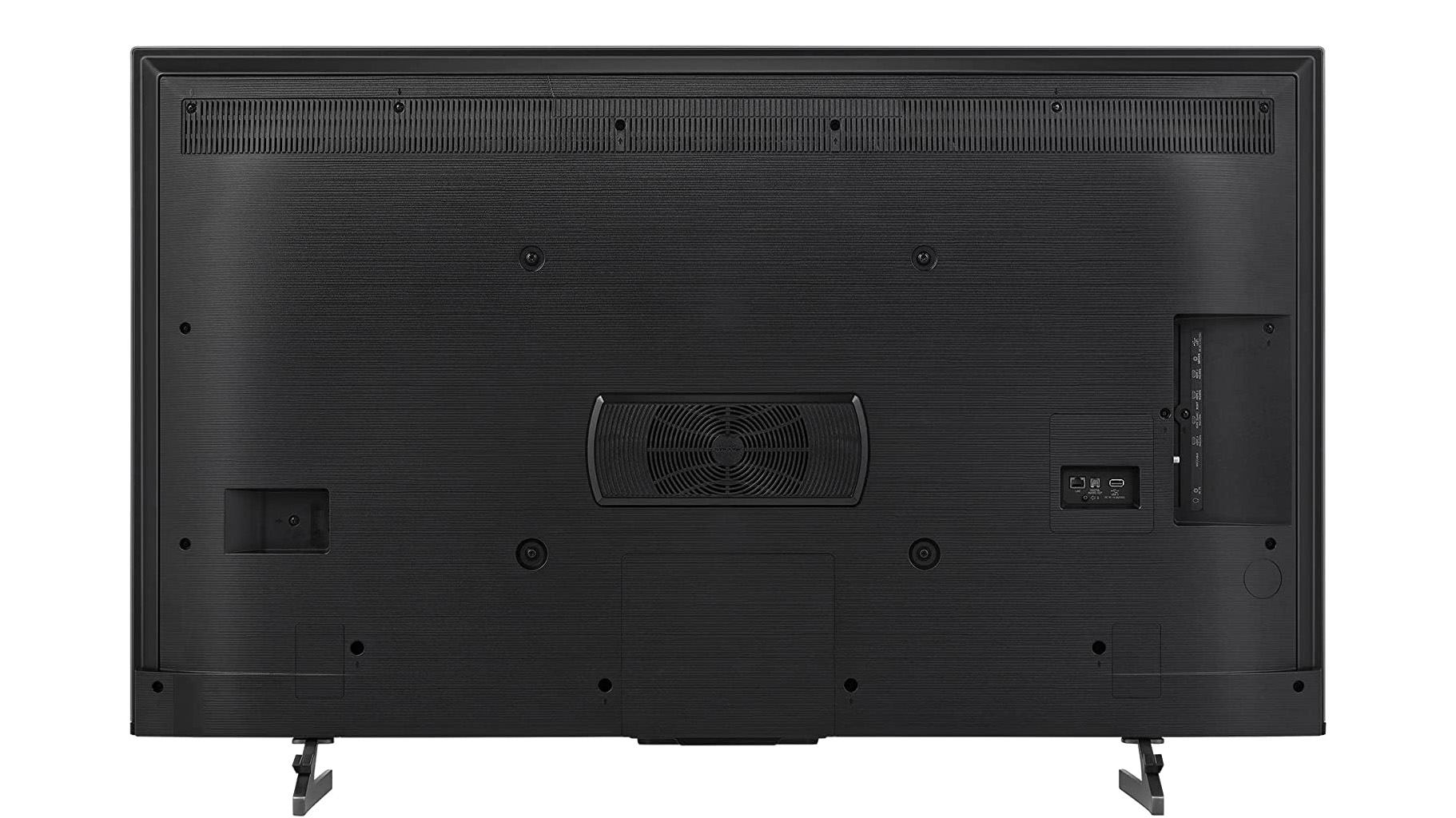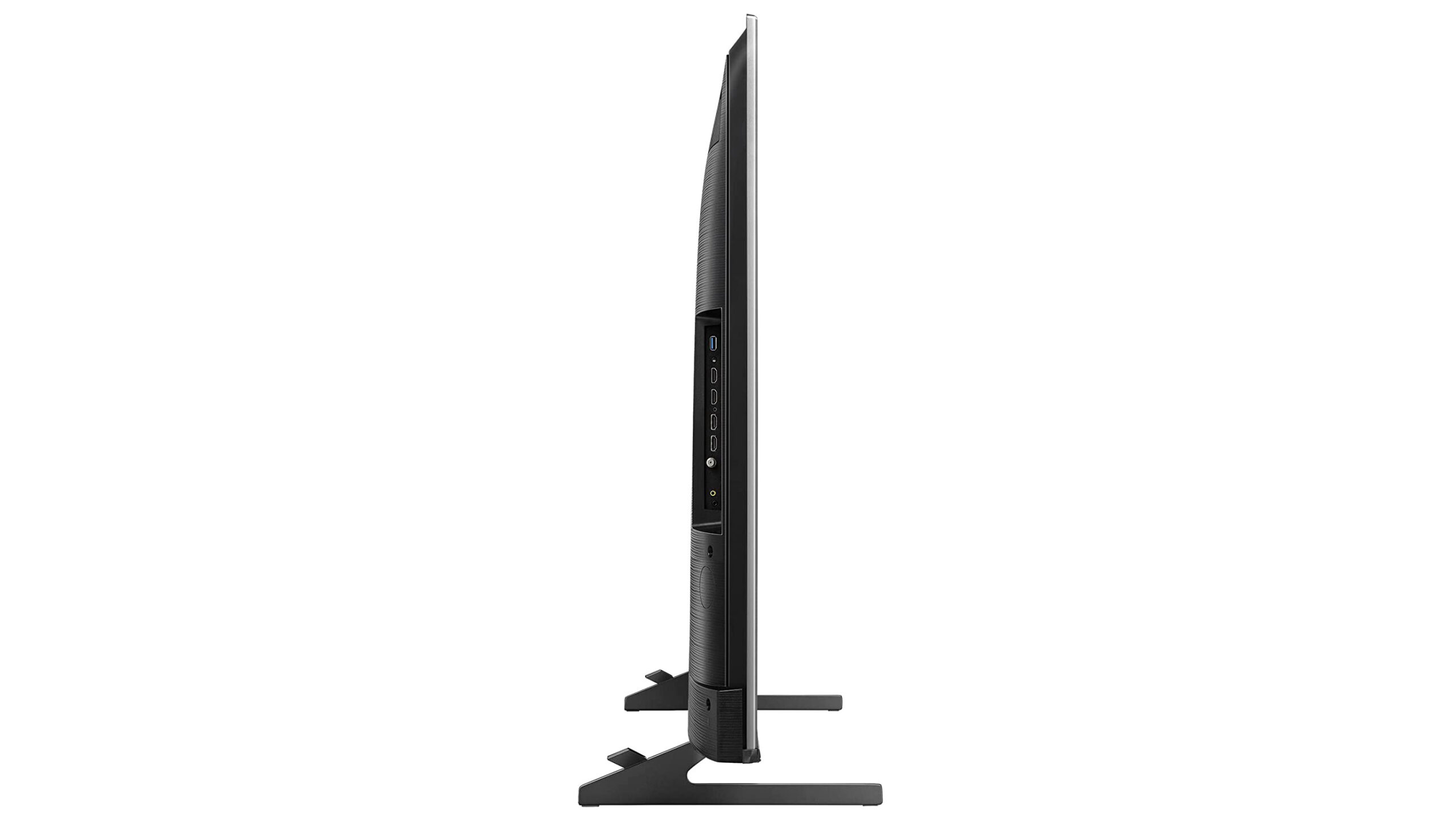The pandemic caused my TV viewing and gaming habits to change.
While I once did nearly all my gaming and TV watching in my living room, I shifted to playing video games on a monitor in my office, allowing me to game the night away with fewer distractions (I also just prefer to be closer to the display I’m playing on). This eventually resulted in me buying LG’s excellent 27-inch GP950-B 120Hz, HDMI 2.1 monitor for playing Xbox Series X (mostly Halo Infinite) and PlayStation 5, instead of upgrading to a more expensive, much larger 120Hz-capable TV.
So when my 2017 mid-range Vizio M50-E1’s backlight started dying (RIP), and it was finally time to buy another television, I had little interest in shelling out the cash for a high-end LG C1 or C2 TV because the majority of my gaming is now done on a monitor.
Still, I appreciate a solid display with great colour/black levels, and I want 4K and Dolby Vision compatibility. Additional features like HDMI 2.1/120Hz refresh rate are a bonus, but not as important to me given I intend to use the TV for mostly watching shows and movies.
This is when I stumbled across Hisense’s surprisingly affordable 55-inch U88H TV. In the Canadian market, Hisense is a relatively unknown name, but in some ways, it’s a replacement for Vizio (especially at Costco), which no longer sells its low-cost but well-reviewed TVs in Canada.
I’ve been using the U88H for the past few months, and, with a few exceptions, the experience has been impressive. First off, instead of OLED, Hisense’s TV features mini-LED technology, allowing the company to keep the cost relatively low ($1,200) at most retailers with a minimal quality trade-off.
Despite not being OLED, the U88H’s display is so bright it illuminates my entire tiny living room thanks to its full-array local dimming zones. Blacks are deep, and colours are vibrant even before tuning them, but there’s a bit of light bleed around the TV’s thin edges. However, this is pretty standard in mid-range televisions and only noticeable when watching darker content. And while I’m not particularly thrilled about it being Google TV-powered, I’ll take the tech giant’s TV OS over Roku, Samsung or even LG’s offering (I’ve only used it a few times and typically watch content on the Apple TV 4K).
 The TV also features four HDMI ports, though only two of them are capable of 4K 120Hz output, and in some cases, one of those might be used up by a sound bar because it’s eARC-compatible. Again, this is common in mid-range TVs, but it’s still worth considering if you have multiple 120Hz capable devices you plan to hook up to the U88H (like an Xbox Series X and a PS5).
The TV also features four HDMI ports, though only two of them are capable of 4K 120Hz output, and in some cases, one of those might be used up by a sound bar because it’s eARC-compatible. Again, this is common in mid-range TVs, but it’s still worth considering if you have multiple 120Hz capable devices you plan to hook up to the U88H (like an Xbox Series X and a PS5).
Other notable features include HDR10 and Dolby Vision high dynamic-range compatibility, and bonuses I alluded to earlier that I didn’t expect to get in this price range, HDMI 2.1 and a decent 15ms response time. While I don’t plan to play much on the TV beyond the odd Switch or Steam Deck title, it’s good to know that if I want to lug my Xbox Series X downstairs for some 120Hz Halo Infinite, I have the option. There’s even support for variable refresh rate (VRR) gaming, another feature that’s not very common with TVs in this price range.
The most notable negative regarding Hisense’s U88H is its blocky, thick design. If you’re used to far more expensive TVs from LG or Samsung, you’ll be disappointed with how bulky the overall look is, but given I’m coming from a mid-range Vizio TV that cost a similar amount when it was released, I didn’t find this jarring. Plus, the U88H is sitting on an arm on my wall (as you can see in my The Office-focused header image), and I rarely look behind it. As much as thin TVs are great, I’d much rather have a high-quality panel.

I’ve also encountered a few quirks in the U88H’s software tied to the dreaded 120Hz refresh rate “soap opera effect.” Turning this feature off from the core settings is a simple process that requires a few button presses on the remote, but once you get into actually consuming content, you need to flip it off for each picture mode through a secondary menu accessed by a different button on the remote. After you’ve turned the annoying feature off for every form of HDR, the TV runs as expected, but it’s a perplexing UI decision on Hisense’s part not to offer a universal picture settings mode to turn off ‘Motion Enhancement.’
The China-based company’s TVs are generally positively reviewed by critics and users, but the U88H seems to be its most all-around hit yet regarding price-to-performance ratio. It’s obviously not capable of matching the quality of a TV like LG’s C2 in terms of overall picture quality and design, but if you’re on a budget or, like myself, want a great-looking TV that offers modern features, it’s one of the best TVs currently available in Canada.
Hisense’s U88H is available at several retailers, including Costco, Visions Electronics and Amazon.
MobileSyrup utilizes affiliate partnerships. These partnerships do not influence our editorial content, though MobileSyrup may earn a commission on purchases made via these links.
